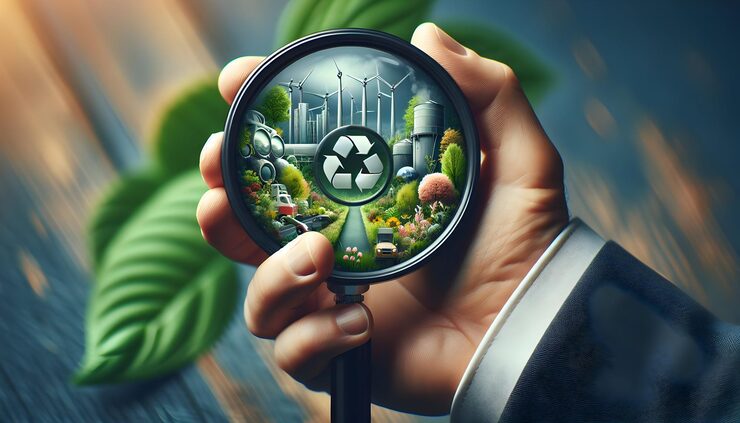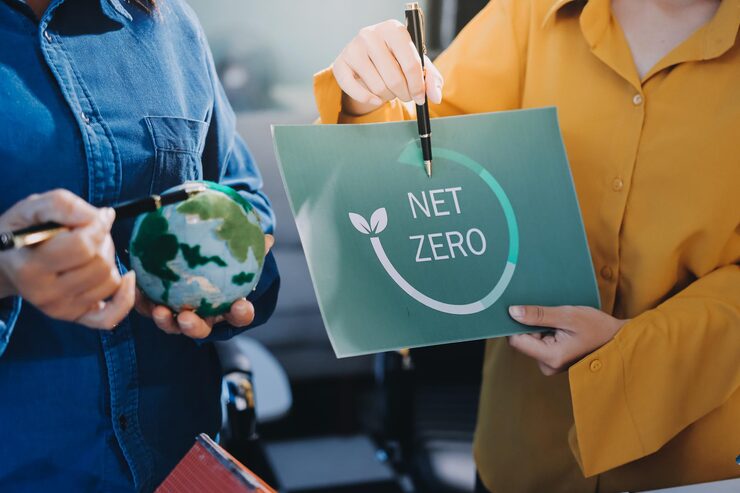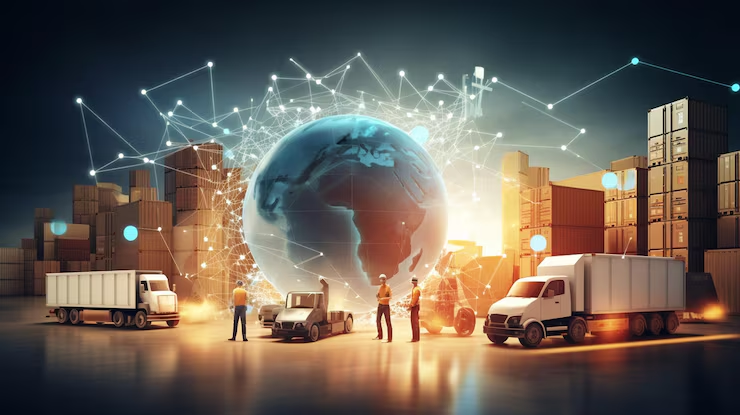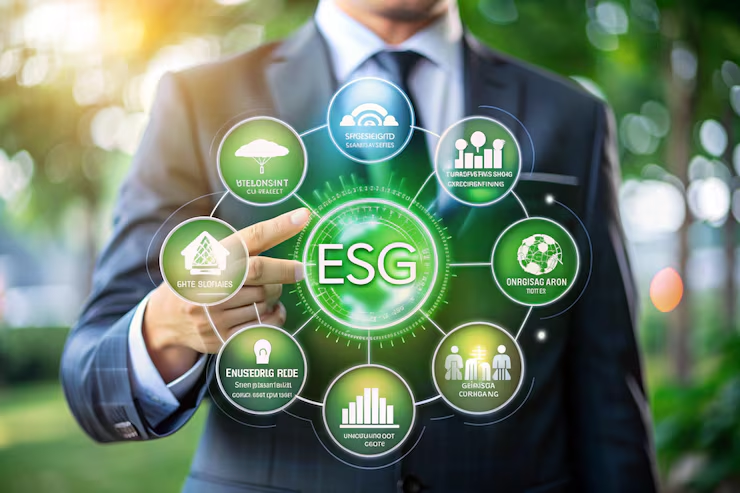Beyond the Gates
Why Supplier Emissions Are the Missing Piece in Your Net, Zero Strategy

When businesses chart a path to net zero, the immediate focus usually falls on what’s closest to home, controlling on site energy consumption and cleaning up direct operations. But for most organizations, the real source of emissions is hidden further up the value chain. While strategies typically center on Scope 1 (direct) and Scope 2 (purchased energy) emissions, the majority of a company’s carbon footprint often sits out of sight, embedded in supplier operations. These are known as Scope 3 emissions. Ignoring them is like trying to fill a leaky bucket, no matter how much you do within your own walls, you can't achieve true net zero if your supply chain is a climate blind spot.
Let’s explore why supplier emissions matter more than ever and how tackling them can turn your ESG strategy from good intentions into meaningful impact.
The Scope 3 Reality: Out of Sight, Out of Mind?
When you turn on the lights or run your manufacturing line, you control the emissions that result (Scope 1 and 2). But what about the steel in your machines, the packaging around your products, or the logistics that get your goods to market? These all generate emissions before your business ever touches them. Here’s where Scope 3 comes in.
Scope 3 covers all indirect emissions, not just from energy, but from every product, process, and service in your supply chain. According to CDP and McKinsey, supply chain emissions (Scope 3) can be up to 11 times greater than direct operational emissions for many industries. That means even sustainability leaders risk missing their climate goals if they overlook supplier activity.
The Business Case: Why Supply Chain Emissions Matter
1. Regulatory Pressure Is Rising
Governments and regulatory bodies worldwide are introducing tougher rules for carbon disclosures. Frameworks like the EU’s CSRD, UK's SECR, and India's BRSR Core are increasingly focusing on Scope 3. Soon, failure to report and manage supply chain emissions won’t just be a reputational risk, it could trigger real penalties and loss of market access.
2. Investor and Customer Demands
Investors are no longer satisfied with vague climate pledges. They demand hard data, especially on Scope 3 emissions. Similarly, enterprise customers, especially in sectors like automotive, tech, and retail, are seeking suppliers that transparently manage their own supply chains. If you can’t prove you’re decarbonizing beyond your gates, you may lose contracts or miss out on growth opportunities.
3. Competitive Advantage
Supply chain decarbonization is about risk management and resilience. Companies that know their full carbon footprint can identify inefficiencies, reduce costs, and unlock new value streams. They become preferred partners, meeting the sustainability expectations of global brands, regulators, and increasingly eco conscious consumers.
Supplier Emissions: A Global Imperative for True Net Zero

This is not just an Indian challenge. Worldwide, companies across every sector are realizing that their climate impact extends far beyond direct operations. Global supply chains crisscross continents, connecting manufacturers in Asia, suppliers in Africa, and consumers in Europe and the Americas. International reporting frameworks like the Greenhouse Gas Protocol, CDP, and standards from the ISSB are compelling organizations everywhere to track and report supplier emissions as part of their Scope 3 calculations. For multinational brands, aligning all parts of the value chain, from raw materials to finished products, with climate goals is essential for regulatory compliance, investor trust, and market competitiveness. As climate policies tighten and stakeholder expectations rise across the globe, addressing supply chain emissions has become not just a local or regional task, but a worldwide business imperative. Embracing this broader responsibility positions companies to lead in sustainability, foster innovation with global partners, and unlock new markets as demand for low, carbon products surges internationally.
Why Are Scope 3 Emissions So Hard to Tackle?
1. Lack of Transparency: Most suppliers, especially small and medium enterprises (SMEs), lack sophisticated measurement tools or reliable data.
2. Complex Networks: A typical company can have hundreds, sometimes thousands, of suppliers across multiple tiers, many in different countries and regulatory environments.
3. Data Inconsistency: Suppliers may report emissions using different methods, timeframes, or units, making consolidation difficult.
4. Alignment and Incentives: Suppliers may not be motivated to decarbonize unless large buyers actively engage, reward, or require it.
How Leading Companies Are Responding
Forward, thinking businesses are adopting integrated strategies to tackle supplier emissions:
1. Mapping the Value Chain: Use digital tools to gain visibility into your entire supply chain. Platforms like WOCE’s esgpro.ai allow tracking of emissions through automated data collection and supplier engagement, reducing manual errors and data gaps.
2. Supplier Engagement Programs: Leading brands collaborate with their suppliers, offering training, incentives, and clear expectations to drive emission reductions collectively.
3. Standardization of Data Reporting: Companies are standardizing data collection and requiring suppliers to use agreed methodologies, tools, and timelines for more reliable data.
4. Supplier Audits and Scorecards: By scoring and openly communicating performance, buyers encourage a race to the top, and build long, term partnerships with those committed to sustainability.
Beyond Compliance: Turning Supply Chain Action into Business Value

1. Unlocking Efficiency: When companies and suppliers work together to decarbonize, they often discover new savings in materials, energy, and logistics.
2. Driving Innovation: Supplier collaboration sparks process improvements and net, zero, aligned products, fueling business transformation.
3. Building Trust and Transparency: Supply chain decarbonization isn’t just about what you do, it’s about showing it. Robust data and transparent reporting build trust with customers, investors, and regulators.
India’s Moment: Supply Chain Emissions and National Climate Goals
For companies operating in India or with Indian supply chains, the issue is doubly relevant. With India committing to net zero by 2070, local regulations are evolving to require deeper visibility across industrial networks. Initiatives like the Carbon Registry, India (CR, I) make it easier to track and verify local projects and offsets, enabling businesses in cities like Raipur and beyond to participate in global best practices for supplier emissions management.
Getting Started: Practical Steps for Tackling Supplier Emissions
1. Assess and Prioritize
Start with a value chain emissions mapping, identify the suppliers and categories that contribute most to your Scope 3 footprint.
2. Engage Early and Often
Develop supplier engagement strategies. Communicate your climate goals, set clear expectations, and offer tools to support supplier measurement and reduction activities.
3. Leverage Technology
Use digital platforms and APIs to automate data gathering, reporting, and analytics throughout your supplier network. WOCE’s esgpro.ai offers seamless integration and real-time tracking for large, complex supply chains.
4. Integrate with Procurement
Make carbon data and sustainability performance part of your procurement decisions. Reward progress and require action as part of supplier contracts and RFPs.
5. Boost Transparency
Share results with stakeholders through regular disclosure, internally, to investors, and in public ESG reports. Transparency accelerates improvement.
Conclusion: Net Zero Success Starts Upstream
Your journey to net zero cannot stop at the factory door. Supplier emissions are the largest but most addressable piece of the climate puzzle for modern organizations. By partnering with your value chain and leveraging innovative data tools, you can move from isolated improvements to systemic impact, achieving goals that matter to your business and the planet.
Are you ready to unlock the hidden potential of your supply chain? WOCE’s esgpro.ai is here to help you measure, manage and master Scope 3. Let’s build a future where every link in your value chain is a step toward net zero.
With esgpro.ai’s Supplier Emissions Module, gain granular visibility into third-party emissions, configure custom emission factors, and drive data-backed decisions for a more sustainable, low-carbon supply chain.




